Get inspired with 26 fresh project ideas you can start building today.
Whether you’re a beginner web developer or an experienced builder, launching a new website project is a great way to sharpen your development skills. You can also build out a web design portfolio and even earn some revenue — depending on the type of website.
If you’re not sure what type of web page to launch, you’re in the right place. We put together 26 different web development project ideas that you can start building today.
26 best website ideas you can start in 2026
Check out these 26 different website design ideas to see what’s possible.
1. Job site

Looking for an evergreen website idea that never goes out of style? Job sites can draw recurring visitors who are actively searching and seeking new opportunities.
This steady flow of job seekers makes job boards a consistent source of traffic. If they're well-built, these websites can become a steady revenue stream.
Most job sites aren't very user-friendly, which can frustrate job hunters. A well-designed job site can attract plenty of visitors and generate revenue.
Best Writing stands out as a solid example. It features a minimalist design that emphasizes usability and high-quality leads. The user experience is streamlined, helping the site stand out from other job boards.
Unlike many job sites, Best Writing offers a specific search function that simplifies the hunt. Users can quickly find the job they're after.
Here’s where the revenue comes in. Best Writing offers a paid monthly membership that gives subscribers advanced notice about new postings. It also charges job posters a fee. These fees help the site bring in revenue without relying on ads.
For more best website examples, explore the Made in Webflow showcase to spark inspiration.
Key takeaway: Focus on usability to help job seekers find openings quickly. Monetize by charging job posters or offering advanced membership perks.
Related reads: How to build (and grow) a job board with Webflow
2. Affiliate site

An affiliate website showcases products and resources in a specific niche. Think of it as a digital boutique catering to the tastes and interests of a certain audience.
A great example is Raymmar’s Reads. It's like a digital book club where Raymmar shares favorite books via Amazon affiliate links. He uses 3D animations and color-shifting backgrounds to make the site stand out.
Affiliate sites can bring extra money. When users purchase products through these posted links, site owners typically earn a portion of the sale.
Key takeaway: Lean into valuable yet simple content. Monetize by directing visitors to affiliate links that align with your brand.
3. Membership website
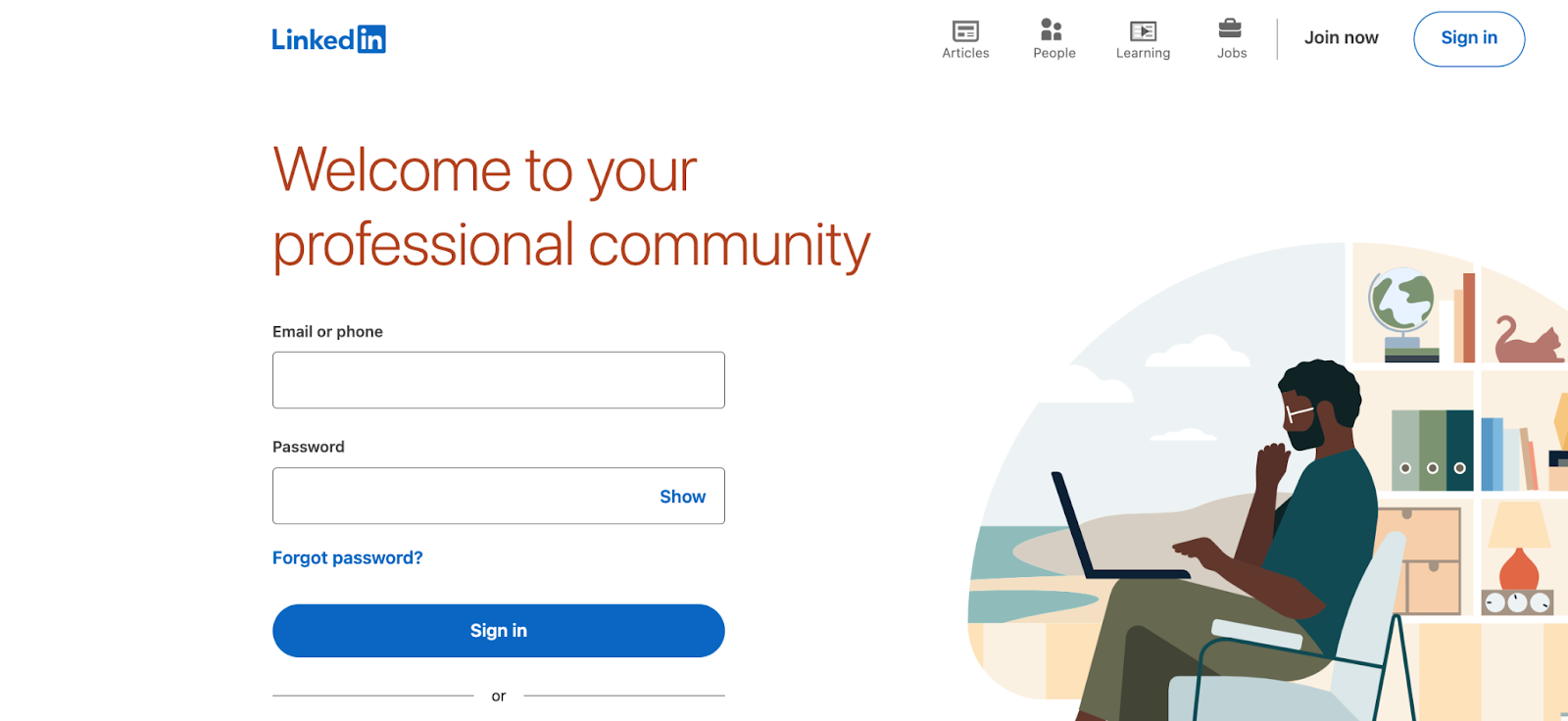
Membership websites reward dedicated audiences by offering premium content or tools. Members pay a subscription to unlock perks not found anywhere else.
LinkedIn, the professional networking platform, offers a membership program called "LinkedIn Premium" with advanced features. These include advanced search filters, profile insights, and the ability to message contacts outside your network.
LinkedIn Premium also comes in tiers, like Premium Career, Premium Business, and Premium Sales Navigator. Each plan caters to different needs so members only pay for what they use.
This model drives revenue by giving users extra value beyond the free service. If you want to create outstanding content and earn ongoing revenue, consider building a membership website.
Key takeaway: Offer exclusive features to reward your audience. Use a tiered membership structure to diversify revenue.
4. Online learning website
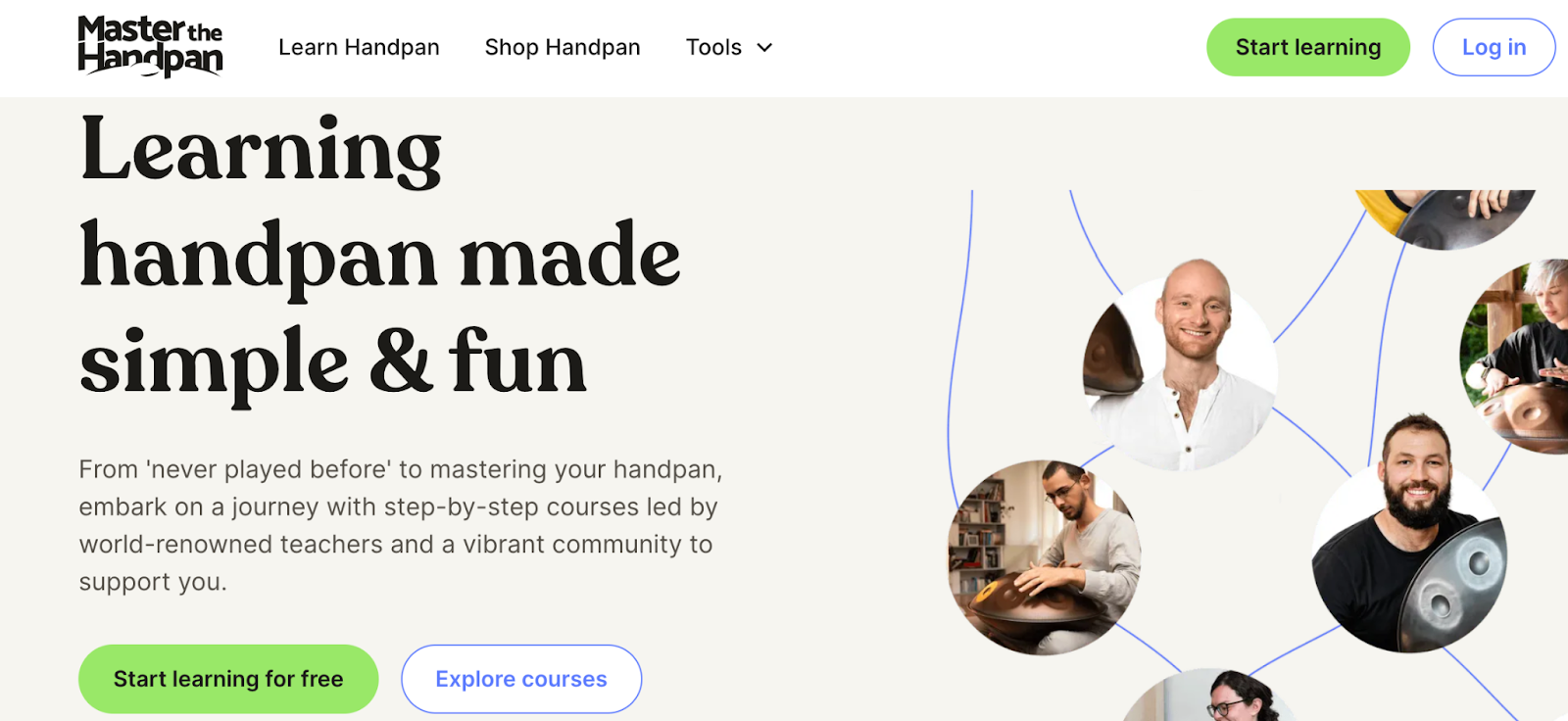
Plenty of platforms host online courses, but they may take a cut of your revenue. Why not launch your own site with a website platform like Webflow?
Master the Handpan offers all you need to learn this unique metal drum. The site has three levels of paid lessons — beginner, intermediate, and master class — plus a music theory course.
There’s also a buyer’s guide, discussion forum, and blog, so there’s plenty of free content to spark interest. Hosting your own course can give you more control and visibility, especially if your topic has little competition.
If you want to have complete control over monetizing your online courses, launching a website of your own is the way to go.
Key takeaway: Cater to a specific niche and develop engaging lesson content. Provide multiple ways for learners to access your offerings.
5. Marketing blog
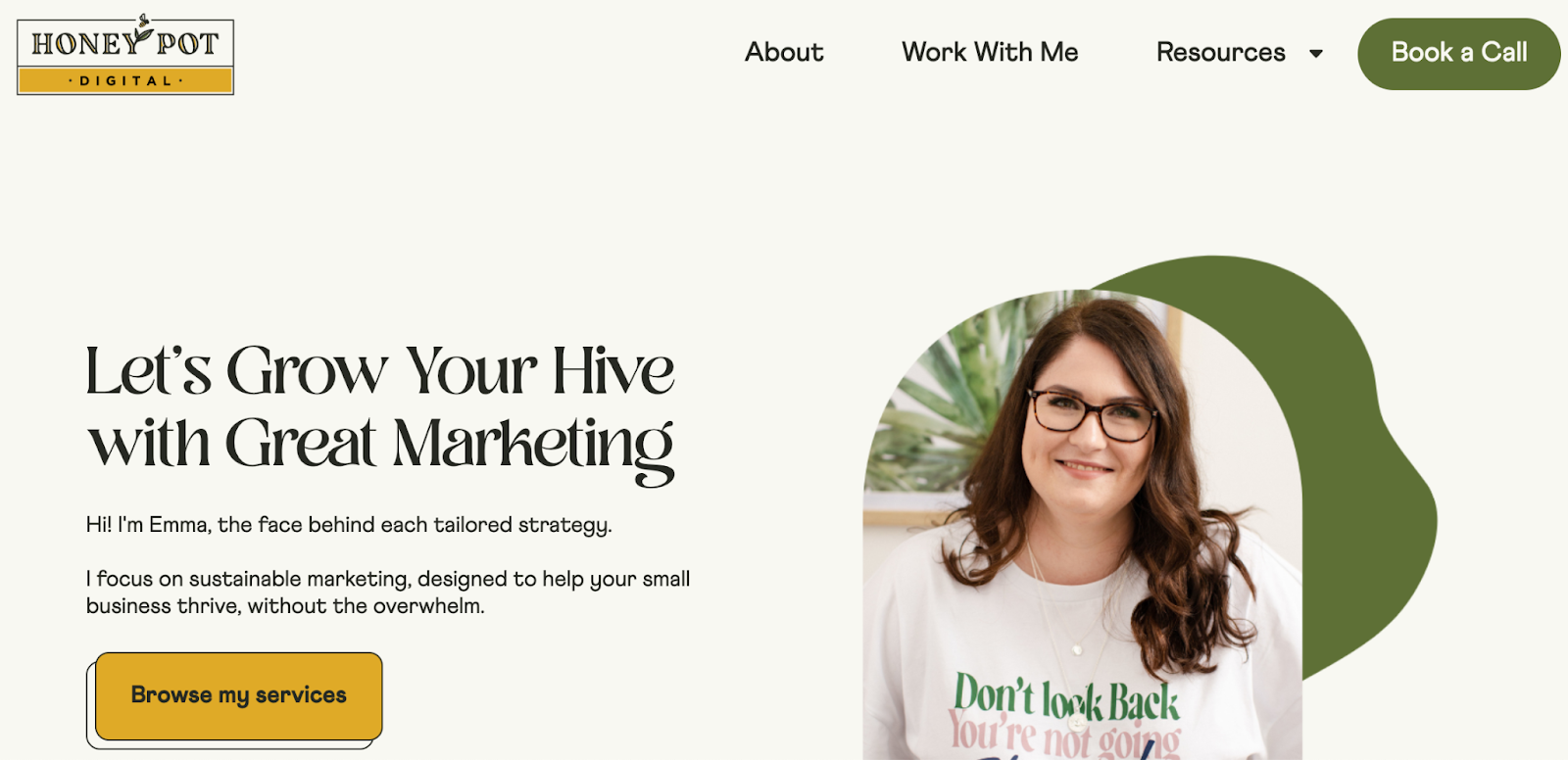
A blog is a straightforward project anyone can build. It works as a place to share knowledge, showcase expertise, and even sell products or services.
Owned and designed by Emma Peacock, Honey Pot Digital does exactly that. She provides resources on her blog, touching on everything from social media to marketing one's business online.
This positions Emma as an authority on digital marketing and helps her attract clients. A marketing blog can drive traffic and build trust, so it’s a powerful platform for promoting paid services.
Key takeaway: Showcase your expertise with regular posts. Use a blog to build trust, highlight services, and grow a loyal audience.
6. Ecommerce website

Online shops are a popular way to earn extra income. With so many ecommerce websites out there, you’ll need a strong brand identity and niche to stand out.
You can start small with just a few items or scale up to hundreds as your business grows. Skinlabs, for instance, is a boutique skincare site that sells everything from cleansing balms to soothing toners.
Clean photography and a bright design give Skinlabs a refreshing look. It creates a sense of trust and clarity for shoppers.
Key takeaway: Pick a niche and develop a strong brand identity. Provide a smooth shopping experience and user-friendly product pages.
7. AI website
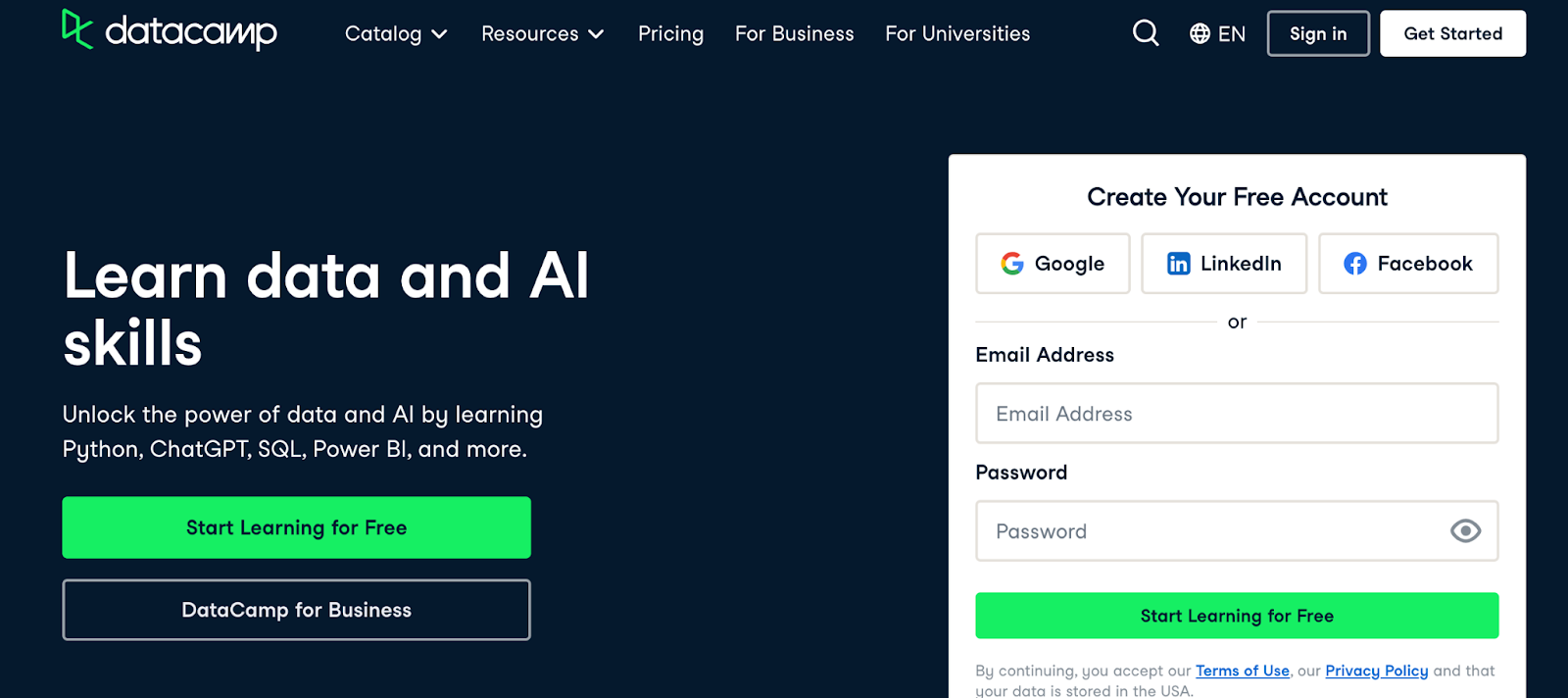
If you’re a web developer, you’re likely aware of AI’s growing power. This tech focus makes an AI website a smart project to launch.
DataCamp is a prime example. Its interactive courses and tutorials help users master data science and analytics. Members set their goals, and the platform’s AI tailors personalized learning paths.
The result is a practical approach that simulates real-world scenarios. This keeps learners engaged and helps them build a solid portfolio.
Key takeaway: Combine advanced technology with an engaging interface. Offer personalized features that solve real-world challenges and retain loyal users.
8. Service-based website

A service-based business offers something you can’t or don’t want to do yourself — like real estate or interior design. The digital world is full of service-based businesses too.
Scribly provides writing and content services for companies that lack an in-house team or need extra help. They handle everything from social media management to strategy, saving clients time.
Another example is Bricx, which offers website and UX design to B2B SaaS companies. If you have in-demand skills, launching a service-based site can be personally and financially rewarding.
Key takeaway: Clearly present your services and how you can help. Make sure your portfolio or testimonials are easy to find and encourage leads.
9. Photography website

Photography websites showcase your art and help you reach new audiences. A photography portfolio website can also bring in paid gigs or print sales.
Built in Webflow, Rita Harper’s site highlights her documentary photography. It’s a simple, powerful way to draw attention to her unique style.
Whether you’re a wedding photographer, photojournalist, or portrait artist, your site should reflect your niche. And don’t miss the chance to sell prints or offer booking options.
Key takeaway: Let your images speak for themselves. Use an uncluttered layout to spotlight your portfolio and attract new clients.
10. Portfolio website

As a creative, you might rely heavily on your artistic side. But a design portfolio website can also serve as a powerful marketing tool.
Lise Kyle Chapman’s portfolio showcases her work in an upbeat design. It captures both her expertise and personality, making a strong impression.
If you do web design, writing, or another creative discipline, a portfolio site is essential for showing your talents — and it can help you level up your revenue.
Key takeaway: Build a distinct personal brand through design. Let your best work shine to appeal to prospective clients or employers.
11. Niche search engine
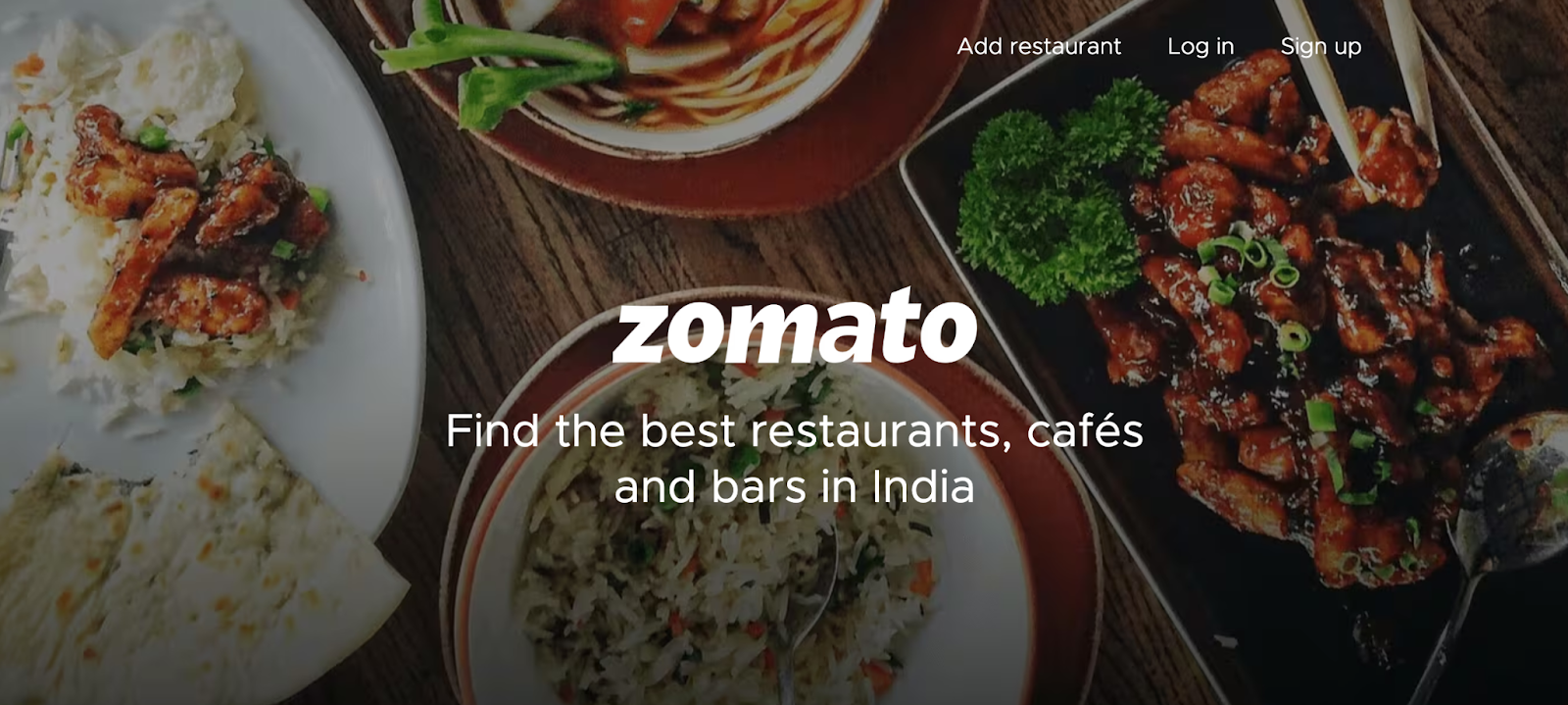
A niche search engine specializes in a certain topic or audience. Zomato, for example, focuses on restaurants and food.
Zomato started as a restaurant discovery tool but evolved to include menus, photos, user reviews, and location-based searches. Through ads and commissions, Zomato generates revenue while helping users find the right dining spot.
Key takeaway: Zero in on a market segment that needs curated results. Make it easy for users to quickly find relevant content or listings.
12. Review website

If you love sharing opinions on movies, music, books, or another passion, build a review website. It’s a fun way to connect with others who share your interests.
You could become the next film guru, like Leonard Maltin. Provide insightful reviews and build trust with your readers.
Monetize through affiliate links, ads, or brand partnerships once you gain a following. You might even get freebies or early product access for honest reviews.
Key takeaway: Provide honest, informative reviews. Build trust with your audience and leverage affiliate links or sponsorships for revenue.
13. Comparison website

Comparison websites let shoppers see multiple options side by side. Think Camelcamelcamel for Amazon product prices.
They pull in product specs, pricing, and user ratings into infographics or lists. Visitors save time, and you can earn income from affiliate commissions.
Key takeaway: Present product data in a clear, organized format. Offer real value by saving visitors time and effort when comparing options.
14. Recipe/food blog

Food blogs and recipe sites are easy for beginners. If you like cooking, writing, and photography, it’s a great fit.
Half Baked Harvest shares step-by-step instructions, photos, and personal stories. This approach builds a loyal audience.
Some food bloggers rely on affiliate links for cookware or specialty ingredients. Others sell ebooks, cooking classes, or advanced courses to generate revenue.
Key takeaway: Keep recipes simple and visually appealing. Include personal tips or stories to connect with readers and boost shares.
15. Fan website
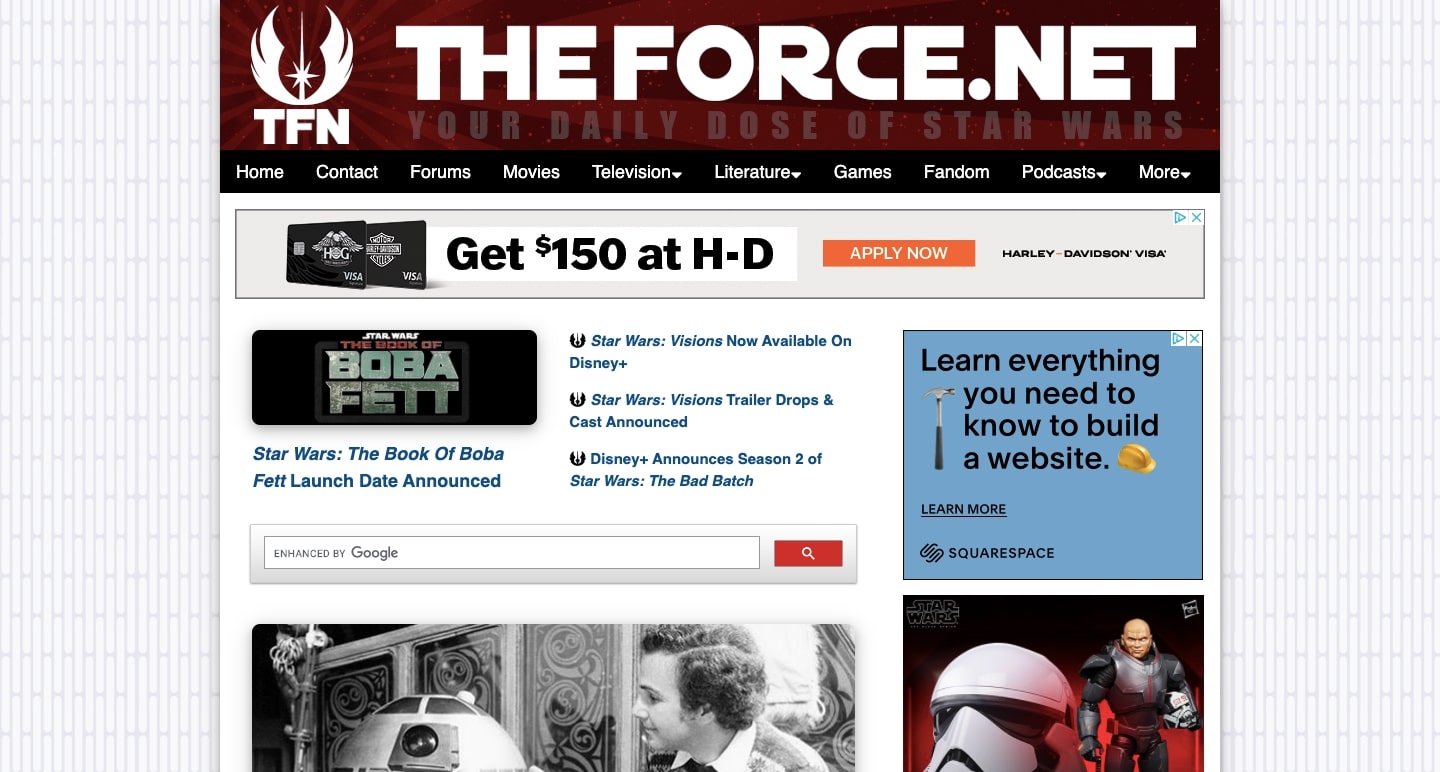
Fan websites focus on a specific fandom, like Star Wars, a hit video game series, or a popular book universe. They’re a fun way to connect with people who share your passion.
For example, TheForce.net offers news, an active message board, and plenty of other excellent content. The site uses ads to drive revenue.
If your website becomes popular, there are opportunities to make money through ads or affiliate links. Create a fan website that welcomes people of all backgrounds and encourage them to share their enthusiasm.
Key takeaway: Create a fan website that welcomes people of all backgrounds. Bring your community together with forums, updates, and shared enthusiasm.
16. Podcast website
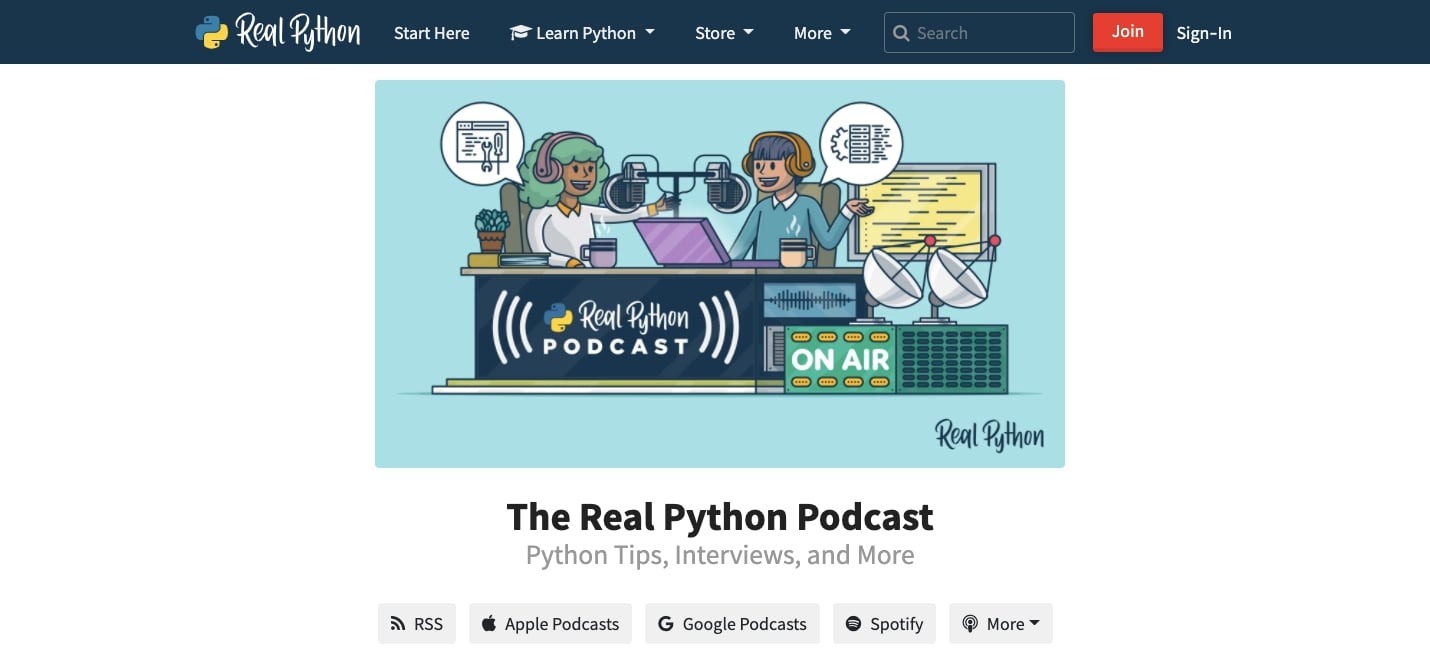
Source: Real Python
When you produce a podcast, social media alone may not be enough. A standalone site gives you an SEO boost and a place to host extra content.
Real Python has a podcast site offering multiple ways to listen. It also provides courses, books, and more for those wanting to learn Python.
Key takeaway: Showcase your episodes and make them accessible. Use your site to host additional content and attract potential sponsors.
17. Travel blog
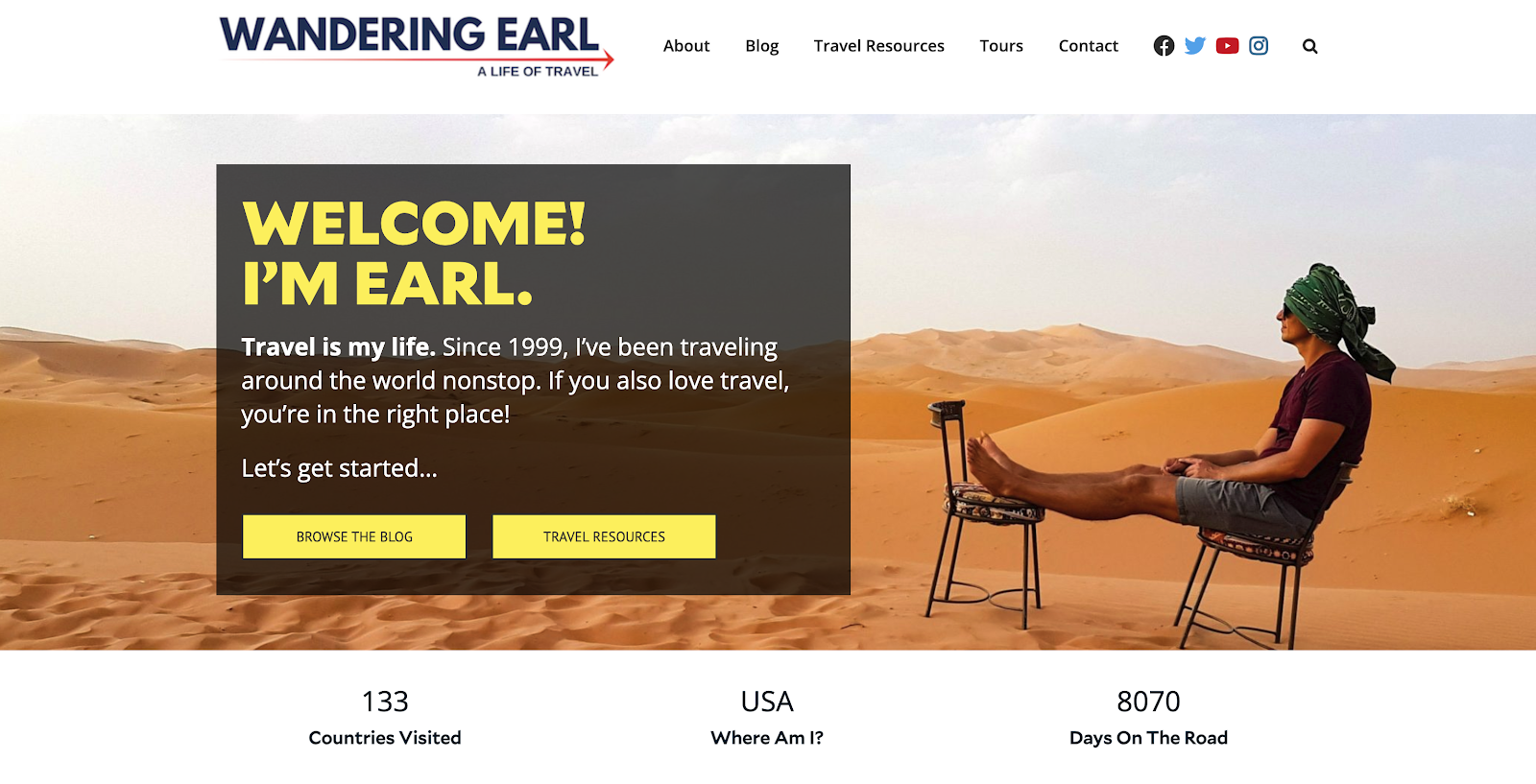
Travel blogs aren’t just for social media influencers. If you love adventure, you can inspire others with tips, stories, and photos.
Wandering Earl discusses travel, working abroad, and sells tours. It’s a great example of turning a personal passion into income.
Key takeaway: Transport readers to new places with vivid writing and photos. Monetize with tours, guides, or affiliate partnerships.
18. Fashion blog
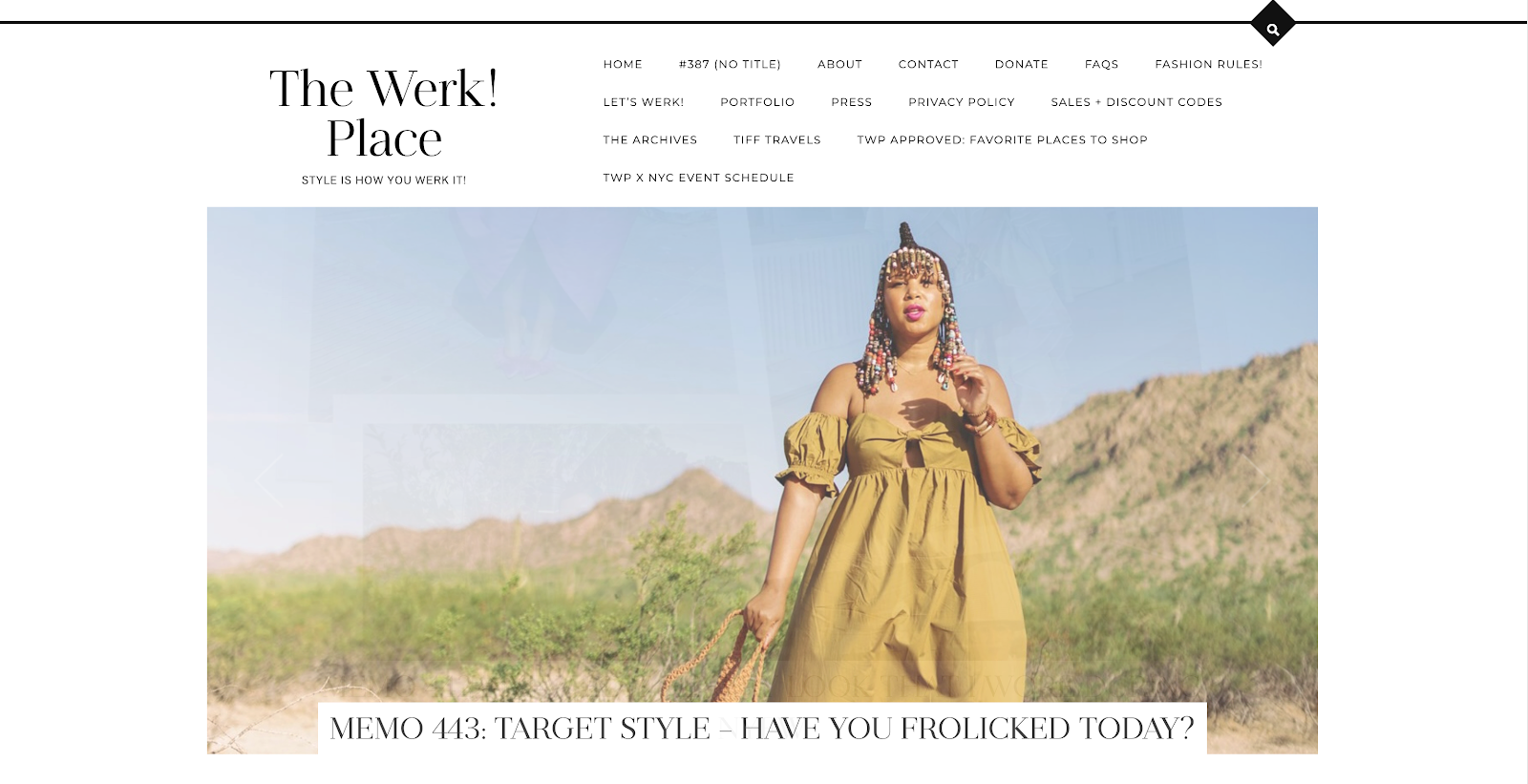
If you love style, a fashion blog is easy to start. Write about up-and-coming trends or post your own outfit pics.
Tiffany Battle’s website, The Werk! Place, does just that. She shares a bold, personal sense of style, plus affiliate links and discount codes.
Staying authentic is crucial. Choose products you truly endorse and let readers know about affiliate links.
Key takeaway: Inspire style with fresh content. Use affiliate links and brand partnerships, but stay authentic with your recommendations.
19. Events website

An events site highlights concerts, open mics, art openings, or anything people want to attend. It’s a great way to keep folks in the loop.
For example, Los Angeles Theater helps visitors see what’s going on around town. They list local shows so people can plan a fun outing.
Key takeaway: Keep event listings accurate and timely. Partner with organizers to boost visibility and earn revenue.
20. Nonprofit website
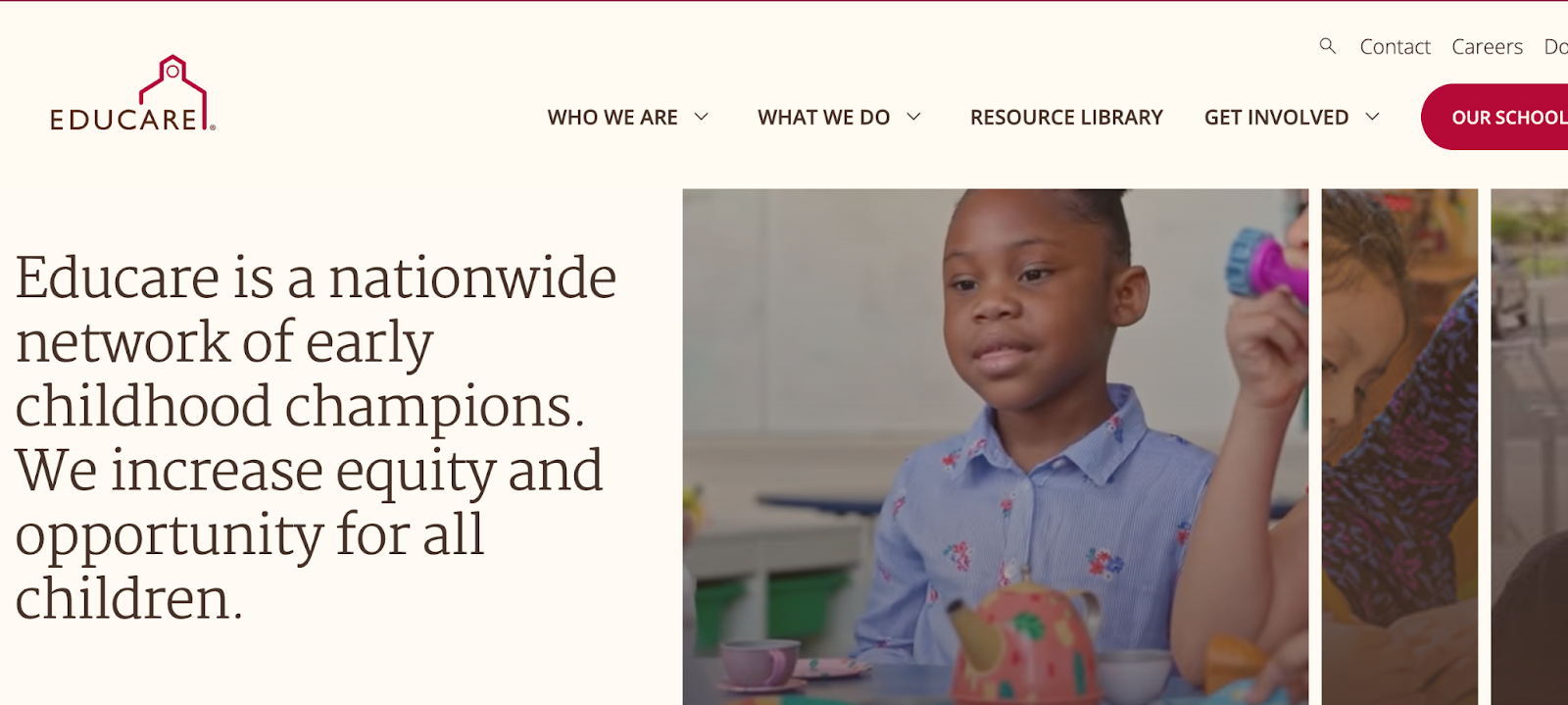
Nonprofit sites often need robust features, like donation tracking and event calendars. Working on one can sharpen your development skills and support a good cause.
EduCares Foundation empowers underprivileged children worldwide through education. Their site accepts donations, highlights success stories, and shows tangible impact.
Key takeaway: Share your mission and impact clearly. Use calls to action to encourage donations or volunteer sign-ups.
21. Resume site

A resume site is simpler than a full portfolio. It’s usually just one page where you include skills, experience, and a way to contact you.
This free link in bio template is a great example. It lists qualifications concisely so prospective employers can see key info at a glance.
Key takeaway: Present relevant experience in a concise, visually appealing format. Make it easy for employers to reach you quickly.
22. Web application

Web apps are popular tools that solve everyday problems. Trello helps teams organize tasks using boards, lists, and cards.
Users appreciate an intuitive layout and real-time collaboration. A good web app can garner a passionate following.
Key takeaway: Offer an intuitive user interface with a clear purpose. Aim for convenience and productivity to attract dedicated users.
23. SaaS website
SaaS, or software as a service, powers many business tools online. Marketers highlight product features and benefits on a dedicated website.
For example, Webflow is a website experience platform with a native CMS, that helps you build sites visually. SaaS marketing sites typically have a homepage, features pages, and a blog.
SaaS websites are usually comprehensive. They’re a key part of a SaaS company’s marketing strategy and can be a valuable website idea.
Key takeaway: Showcase product features and benefits clearly. Provide straightforward pricing, demos, or trials to convert visitors into customers.
24. Newsletter website
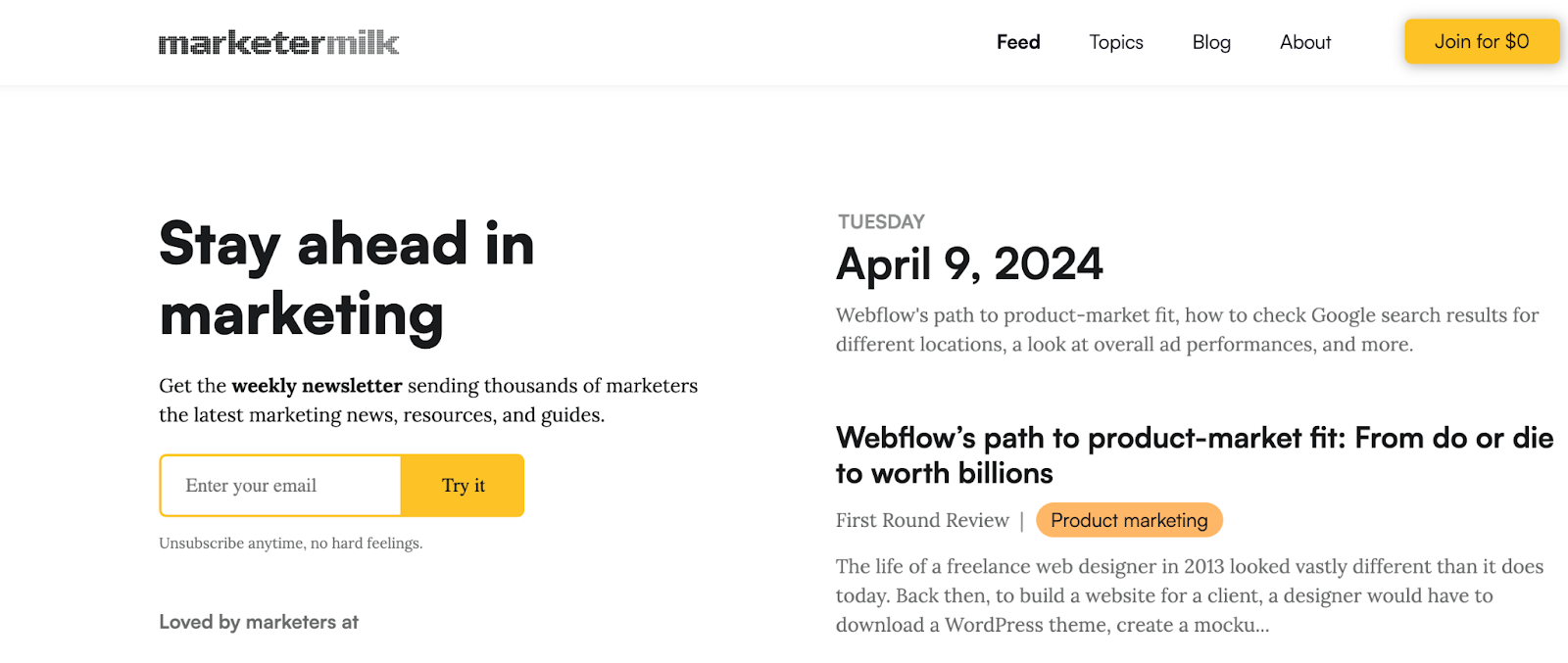
A newsletter site focuses on delivering updates to a specific group. You can write original articles or curate content from around the web.
Marketer Milk does this for marketing news. They collect interesting links and resources, encouraging people to subscribe.
Key takeaway: Provide consistent, high-value content to grow your email list. Expand reach by optimizing your site for relevant keywords.
25. Gallery
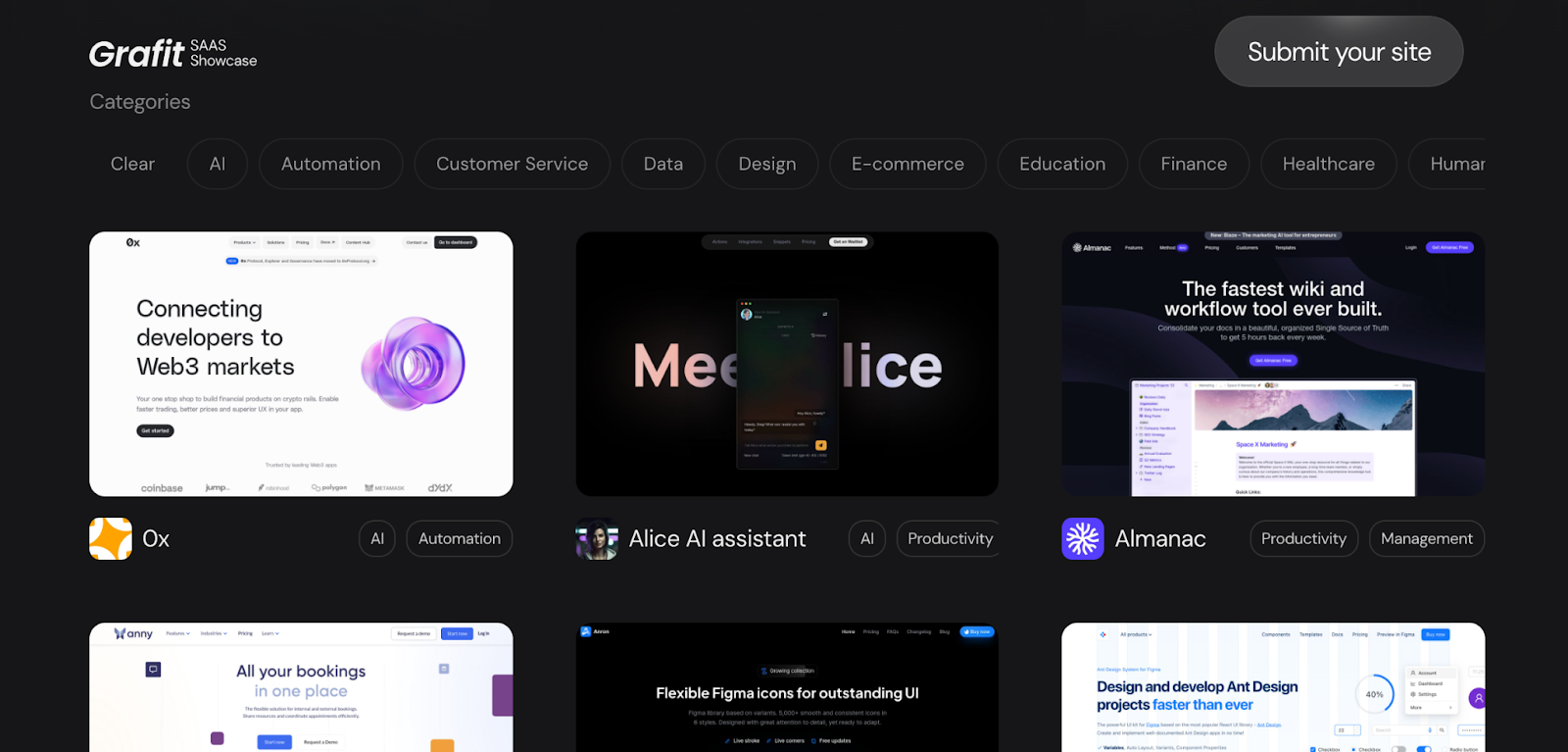
Online galleries collect and showcase examples around a certain theme. Grafit, for example, highlights SaaS sites across different industries.
It helps marketers and developers learn from top-performing companies. You can create a gallery for any niche to inspire your visitors.
Key takeaway: Curate content around a specialized theme. Inspire visitors to explore and maybe even contribute their own work.
26. Dropshipping
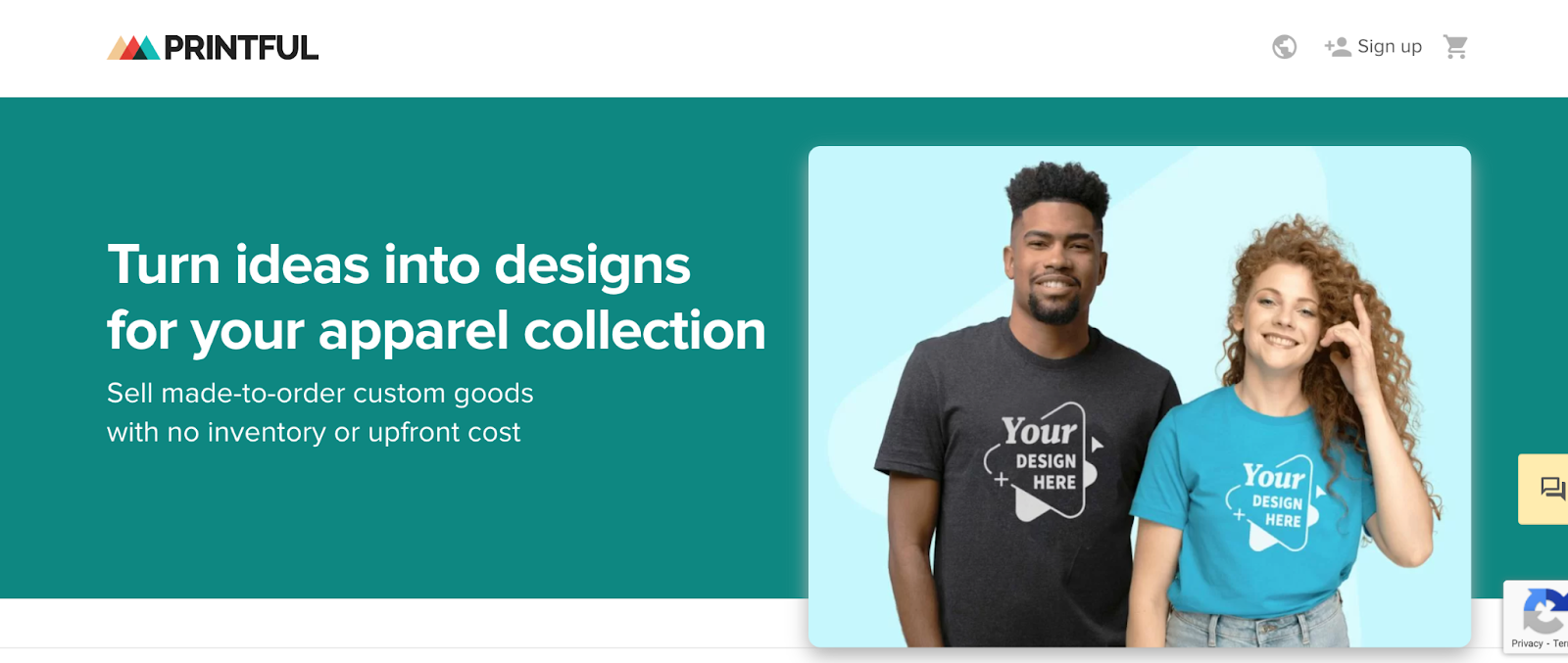
Dropshipping lets you sell products without storing inventory. You partner with suppliers who handle shipping and logistics.
Printful, for example, is a dropshipping and print-on-demand service. You can integrate it with platforms like Shopify or Etsy and start selling custom merchandise right away.
Key takeaway: Focus on product quality and reliable suppliers. With the right niche and marketing, dropshipping can become a solid online business.

Ultimate web design
From 101 to advanced, learn how to build sites in Webflow with over 100 lessons — including the basics of HTML and CSS.
What kind of websites are in high demand?
Websites serve various purposes, often falling into one of three main categories: informational, transactional, or interactive. Each category has distinct characteristics and functionalities tailored to meet specific user needs.
- Informational websites provide users with valuable content such as articles, blog posts, news updates, and educational resources. These platforms educate, inform, or entertain visitors on specific topics or subjects of interest.
- Transactional websites facilitate online transactions, enabling users to buy or sell products or services, make reservations, or conduct financial transactions. E-commerce platforms, booking sites, and financial services websites are common examples of this category.
- Interactive websites encourage active engagement from users through social interaction, user-generated content, or multimedia sharing. Social media platforms, online forums, and multimedia-sharing are just a few examples.
While many websites may incorporate elements of each category, understanding these distinctions clarifies their primary functions and user interactions.
What skills do I need to launch a website project?
Having a basic understanding of web development languages and frameworks is essential. You’ll want to know HTML, CSS, and JavaScript for front-end development, as well as Python, Ruby, or PHP for back-end tasks. If you’re comfortable with frameworks like React, Angular, or Vue.js, that’ll help too.
But with website builders and content management systems like Webflow, beginners and professionals can put their skills into action. It doesn't matter if you're new or experienced — these tools make it easier to create and launch websites.
Build a website with Webflow →
How to choose the best website idea for your goals
Once you outline your goals, it’s easier to see which ideas might fit best. Clarify your target audience, budget, and time commitment so you can tailor an idea to your audience.
When you’re exploring website ideas, consider your budget, time, and how familiar you are with the topic. If you’d prefer quick setups, a curated blog might work great.
If you’d like to build recurring revenue, memberships or online courses may appeal more. Decide what matches your skills and your audience’s needs.
Frequently asked questions about website ideas
Below are a few common questions prospective creators often ask.
What’s the best way to secure a unique domain?
Visit a registrar like Namecheap, Google Domains, or GoDaddy. Pick a domain that reflects your brand and complete the purchase. It’s best to finalize this before building your site so everything feels consistent.
How do I pick the right website builder?
Look for a tool that fits your goals and skill level. If you want creative freedom and no coding hassles, Webflow is a great option. Also check the community and resources available for support.
Do I need coding skills to launch a basic site?
Not necessarily. Website builders like Webflow let you design visually, even if you’re new to coding. You can always learn more as you go.
Launch your next website project with Webflow
Launch your next website project with Webflow. You’ll get a powerful visual canvas, free templates, and robust hosting. Get started for free today, and watch your ideas thrive.
If you’re exploring fresh site projects, stay on track by planning your goals and gathering essentials ahead of time.

Build websites that get results.
Build visually, publish instantly, and scale safely and quickly — without writing a line of code. All with Webflow's website experience platform.































